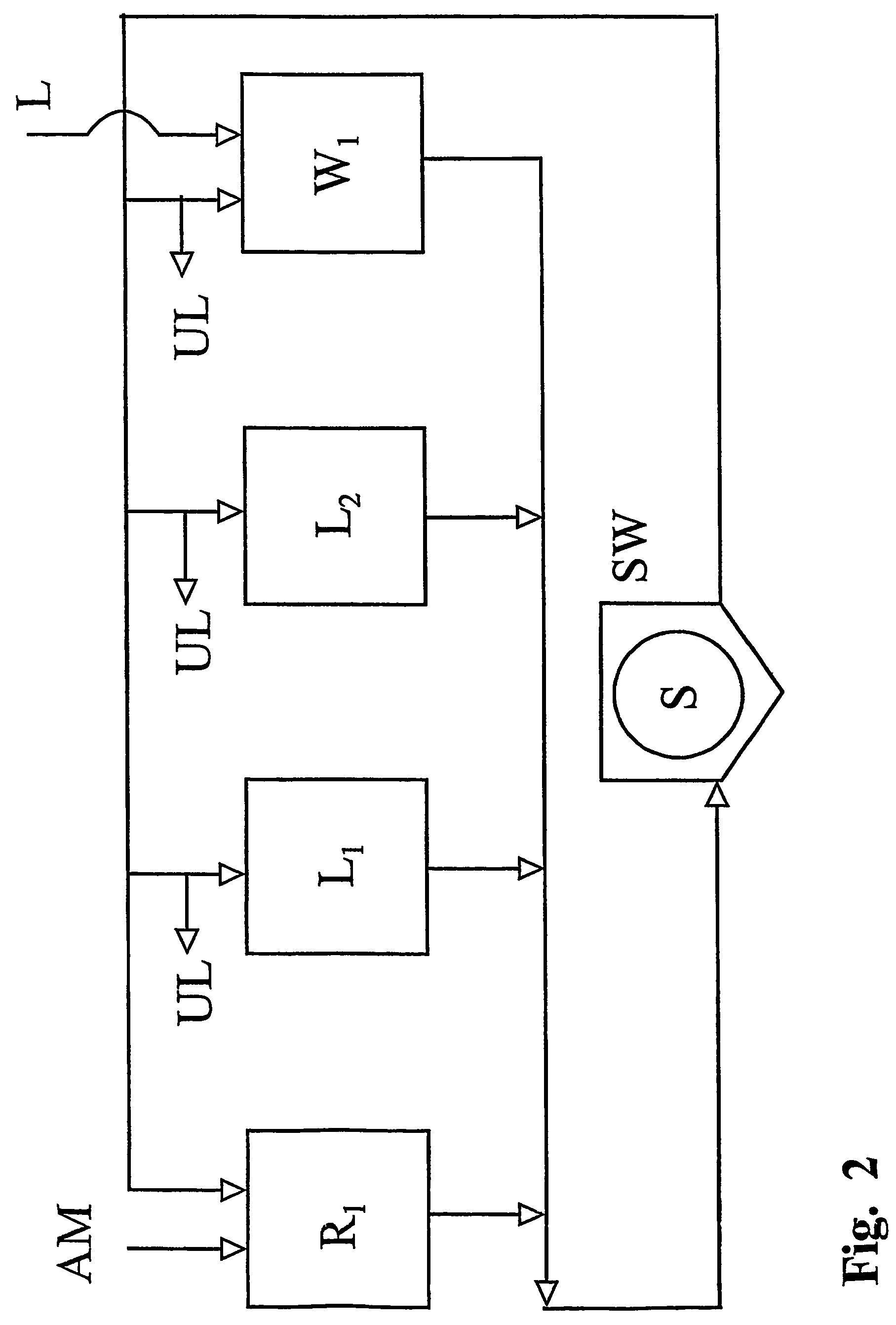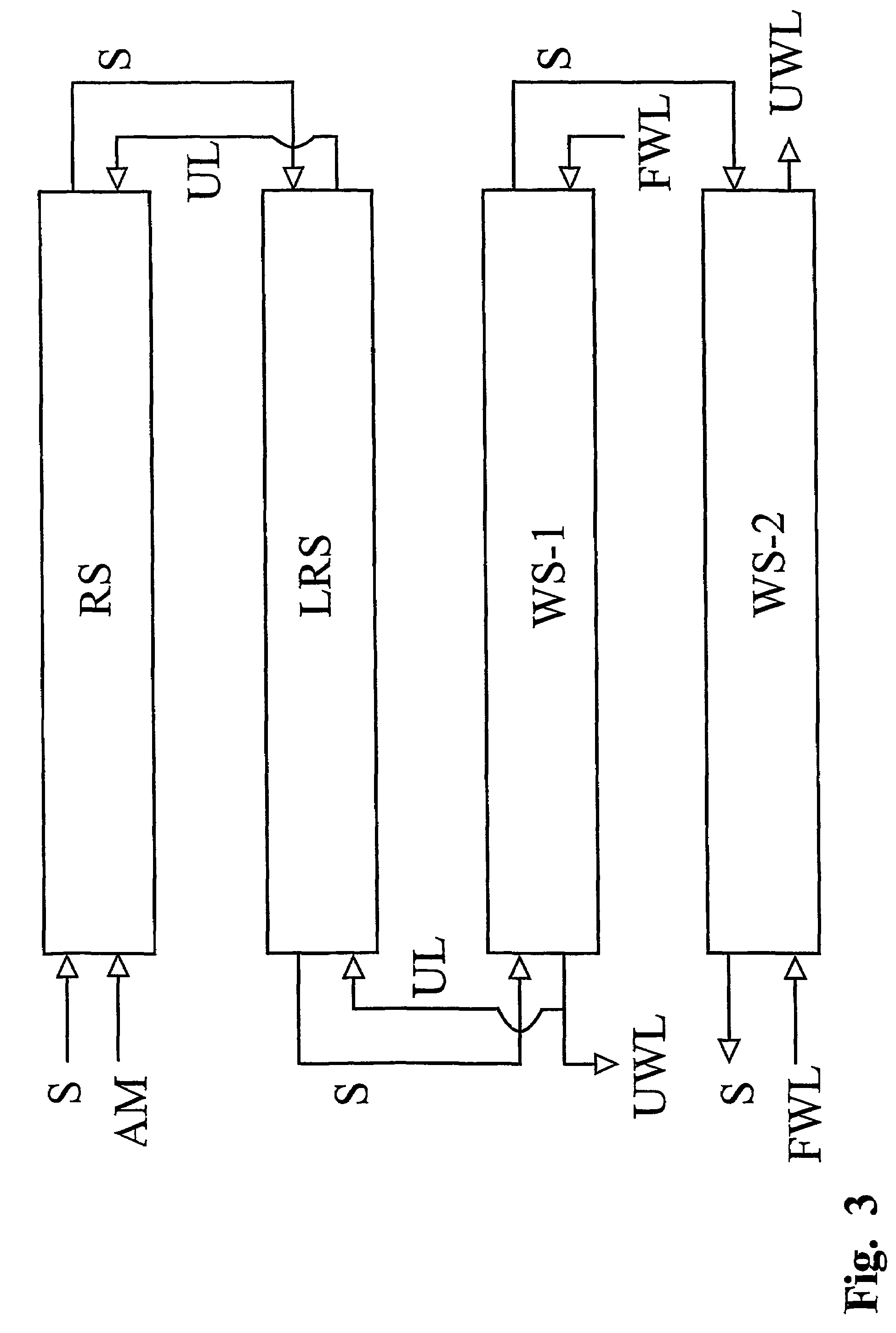Heterogenous carrageenan manufacturing process with recovery of alkali
a carrageenan and alkali recovery technology, applied in the field of het, can solve the problems of high production cost, inability to cost-optimize concentration, extra cost, etc., and achieve the effect of saving costs, high recovery degree, and substantial consumption savings
- Summary
- Abstract
- Description
- Claims
- Application Information
AI Technical Summary
Benefits of technology
Problems solved by technology
Method used
Image
Examples
example 1
[0124]In this example the lye concentration of the liquids in the tanks of the various sections in the steady state situation is calculated, and the so obtained values are used in the start-up situation in a practical experiment.
[0125]The following is a theoretical computer calculation which illustrates that a steady state situation is approached regarding the alkali concentrations of the liquids in the various tanks employed in the process as more and more seaweed is processed. The calculation is performed using a PC spreadsheet application. This computer calculation imitates a batch type process having a set-up where the seaweed is situated in a reactor throughout all steps of the process and where the liquids introduced into the reactor in the different sections of the process, come from a series of storage tanks (cf. FIG. 2). The volume of liquids contained in these tanks are chosen to be of minimum value. In the simulation the number of sections in the lye recovery zone is two ...
example 2
[0137]The following example illustrates the trend that a build-up of solutes, derived from the neutralized NaOH, occurs in the tanks of the various sections during the processing of several batches and that a steady state situation is reached after processing a number of batches. This trend is illustrated by a theoretical calculation and confirmed by an experiment.
[0138]The following is a theoretical computer calculation. The set-up follows closely that of example 1. However, in contrast to example 1, computer simulations were now made to illustrate the effects of the other part of the alkali consumption, i.e. the part which is spent on neutralization of liberated H2SO4 and other species. This part is proportional to the seaweed amount being alkali treated, thus, the needed lye input per batch will be constant.
[0139]Other parameters constituting the basis of the calculation are: seaweed batch size, seaweed dry matter content, seaweed swell factors, reactor volume, all of which were ...
example 3
[0148]In this example it is illustrated how the process according to the invention may be performed. Further, this example confirms that the products obtainable from the process according to the present invention have functional properties comparable to current process products. In this example seaweed was processed in a batch type process corresponding to the set-up in FIG. 2. However the process comprised one reaction step; a first and a second lye recover section; sections of counter current sequences and finally a cross current washing section. The reactor had a volume of 6 m3 and each of the storage tanks had a volume of 20 m3. Three trials were performed, each having different reaction medium temperature. Thus, the temperature of the reaction medium was 65° C. for trial 1, 70° C. for trial 2 and 75° C. for trial 3. Other parameter of the start-up situation appears from table 5 below.
[0149]
TABLE 5Start-up Concentrations in Various Storage Tanks (% (w / v))Storage TankNaOHNaClKClR...
PUM
| Property | Measurement | Unit |
|---|---|---|
| temperature | aaaaa | aaaaa |
| temperature | aaaaa | aaaaa |
| temperature | aaaaa | aaaaa |
Abstract
Description
Claims
Application Information
 Login to View More
Login to View More - R&D
- Intellectual Property
- Life Sciences
- Materials
- Tech Scout
- Unparalleled Data Quality
- Higher Quality Content
- 60% Fewer Hallucinations
Browse by: Latest US Patents, China's latest patents, Technical Efficacy Thesaurus, Application Domain, Technology Topic, Popular Technical Reports.
© 2025 PatSnap. All rights reserved.Legal|Privacy policy|Modern Slavery Act Transparency Statement|Sitemap|About US| Contact US: help@patsnap.com



